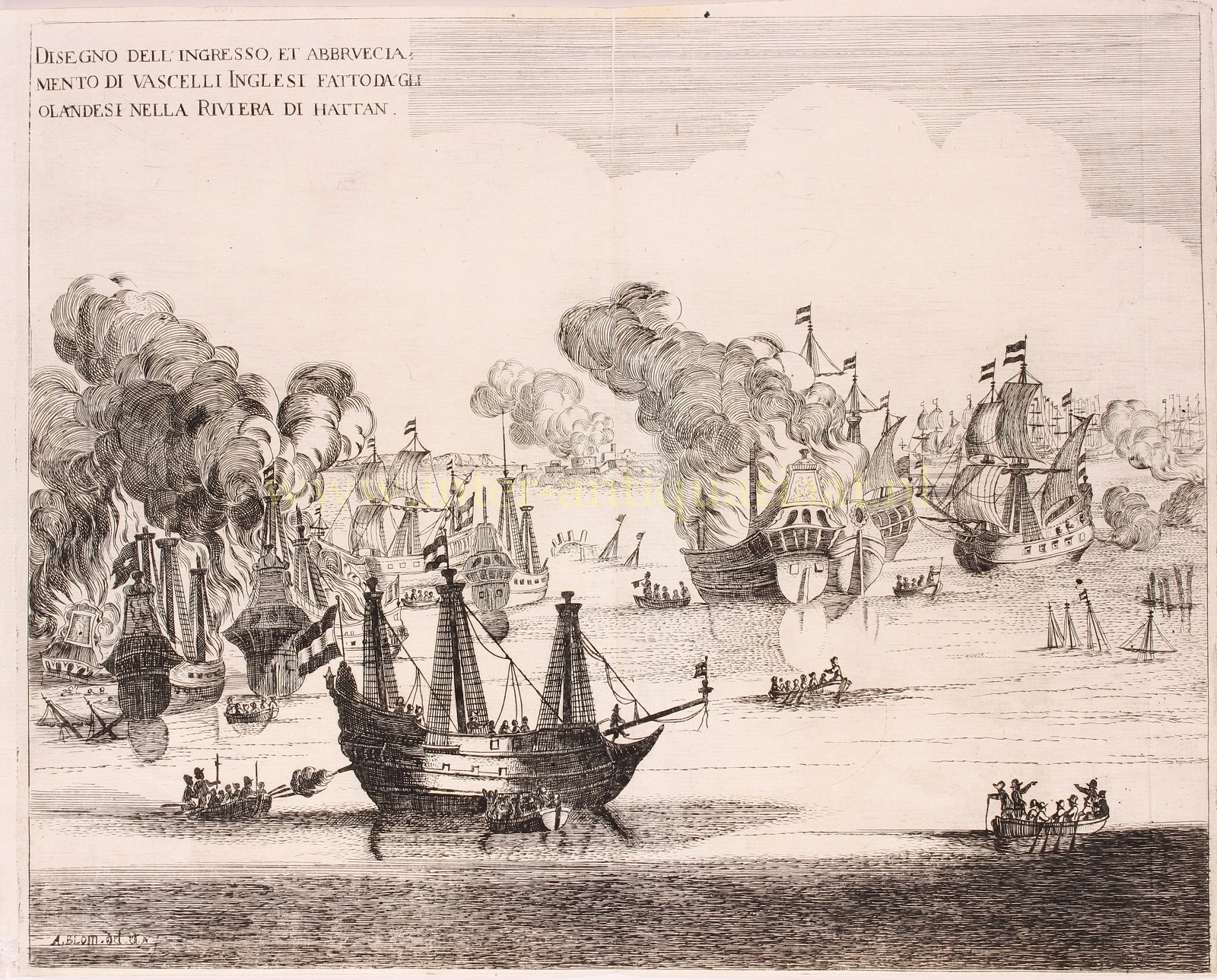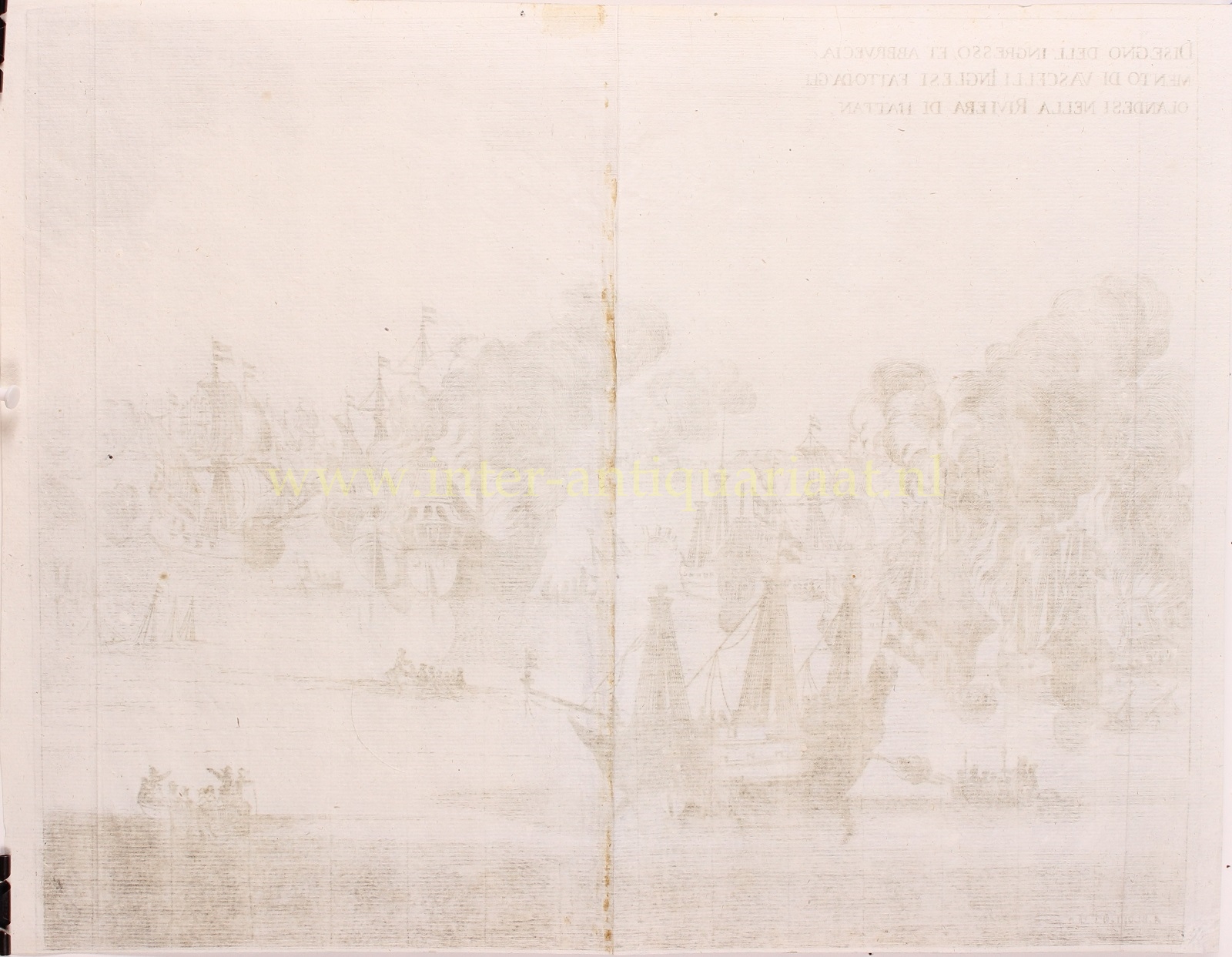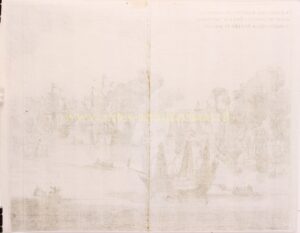RAID ON THE MEDWAY, ONE OF THE GREATEST VICTORIES IN DUTCH MARITIME HISTORY
“Disegno dell’ingresso, et abbrueciamento di vascelli Inglesi fatto da’ gli Olandesi nella riviera di Hattan” [Representation of the entrance of Chatham and the burning of English ships by the Dutch.] Etching with engraving made by Arnold (or Adriaan) Bloem in 1667. Size: 30.2 × 37.5 cm.
During the Second Anglo-Dutch War in June 1667, a successful attack was conducted by the Dutch navy on English warships laid up in the fleet anchorages off Chatham Dockyard. At the time, the fortress of Upnor Castle and a barrier chain called the “Gillingham Line” were supposed to protect the English ships.
The Dutch, under nominal command of Willem Joseph van Ghent and Lieutenant-Admiral Michiel de Ruyter, over several days bombarded and captured the town of Sheerness, sailed up the Thames estuary to Gravesend, then sailed into the River Medway to Chatham and Gillingham, where they engaged fortifications with cannon fire, burned or captured three capital ships and ten more ships of the line, and captured and towed away the flagship of the English fleet, HMS Royal Charles.
Politically, the raid was disastrous for the war plans of Charles II of England. It led to a quick end to the war, and a favourable peace for the Dutch. It was one of the worst defeats in the Royal Navy‘s history, and one of the worst suffered by the British military. From a Dutch perspective, the Raid on the Medway is considered one of the greatest victories in Dutch maritime history.
Literature: Frederik Muller – De Nederlandsche geschiedenis in platen : beredeneerde beschrijving van Nederlandsche historieplaten, zinneprenten en historische kaarten, I, p. 323, no. 2213-d.
Price: Euro 650,-





